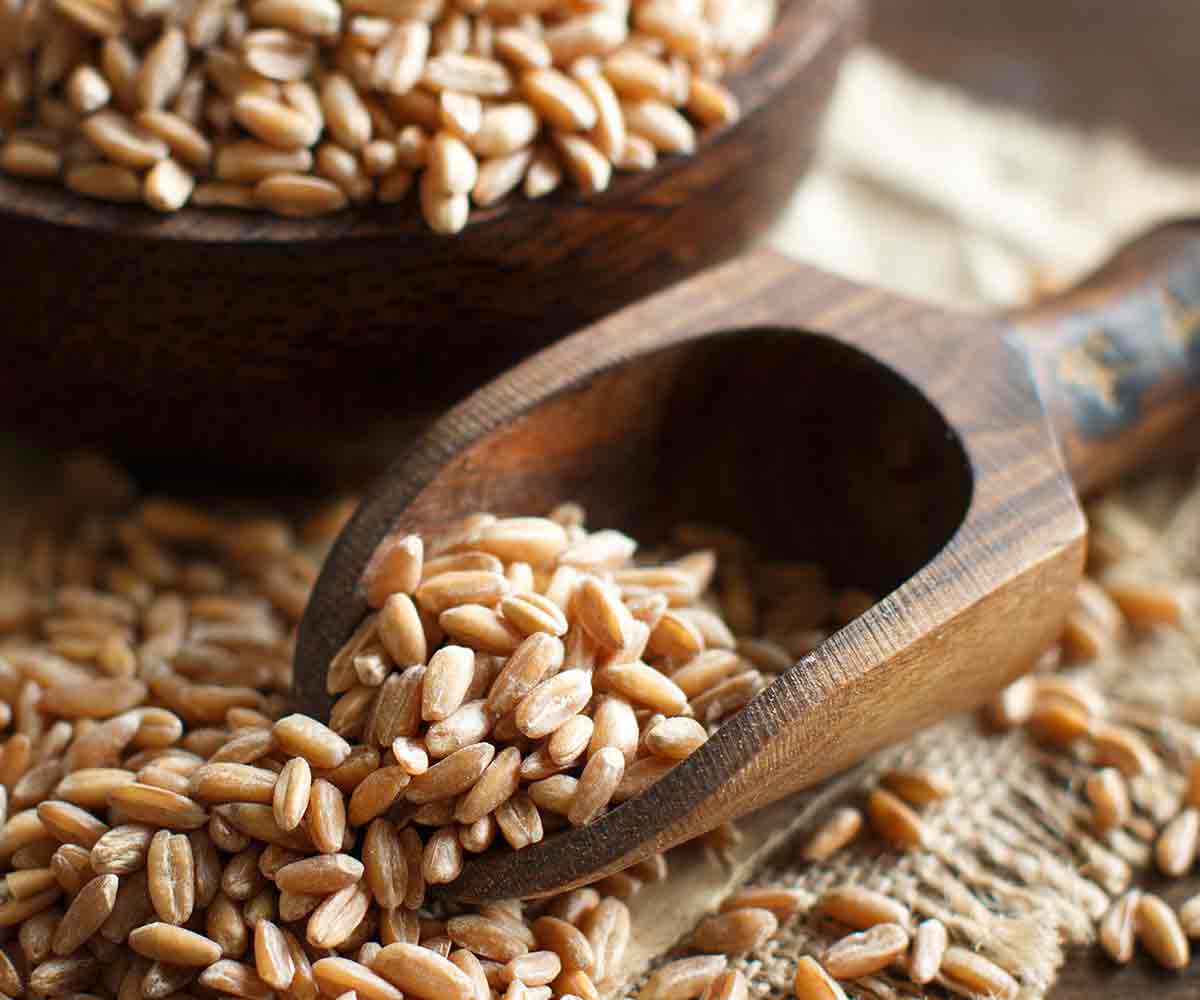Our Human Ecology Diet has cereal grain as its foundation. Taken as a group, the grains can feed more people per acre with semi-perishable food than any other food. The nourishing qualities of eating grain plus the ability to store grain for long periods of time with little spoilage have made it the most important single crop in human history. It has assured societies the capacity to survive through periods of drought or the presence of harmful pests.
It was insurance against the bad times.
The nutritional profile of grain is excellent. It contains protein, vitamins, minerals, carbohydrate, fats, and fiber in a form that is easy to digest and metabolize. Grain is versatile in use and can be made into porridge, breads, or noodles. In North and South America, the primary grain was maize (corn) or quinoa in the high Andes; oats in the British Isles; buckwheat and barley in Europe; wheat, millet, and rice in the Near and the Far East; and wheat and millet in Africa. These grains became synonymous with settled culture.
Agriculture demonstrated the shift to a commensal relationship with the environment. This was the capacity to intelligently farm so that the same land could be used over and over again, and people could stay in one place without completely depleting their resources. The approach of modern organic agriculture is an attempt to return back to this kind of understanding of our relationship to the environment with modern insight and without the chemical maintenance of the soil.
Our Human Ecology Diet
In the Human Ecology Diet, when I talk about whole grains, we are always referring to unrefined cereal grains. This means that only the inedible husk has been removed. The outside shell of the grain, the cellulose, has not been broken. The grain, with this outer skin intact, is capable of being sprouted and contains the germ, the carbohydrate, and the bran. The micronutrients in the grain are protected. When the outside cellulose is removed, the process of oxidation occurs, and the grains begin to lose their nutritional value. This process is what we call refining.
“Whole grain” on the label doesn’t mean whole grain in the product.
The refining process always changes the nutritional value. When the outside seal of the cellulose level is removed, oxidation begins. Aside from the loss of fiber in refined products, there is a loss of protein and antioxidants. This is an important distinction to remember because the food industry will try to fool you in every bend of the road.
Government recommendations always suggest that you increase your consumption of whole grain. Then they proceed to have pictures of loaves of bread and pasta and breakfast cereals. This inaccurate definition of whole grain leads consumers to choose poor-quality grain products with the idea that they are eating the healthiest option. Most of the bad press for whole grains comes from a lack of clarity between these refined products and whole grains.
Much of the confusion regarding whole-grain consumption is purposely generated by those who support high consumption of animal-sourced foods. I consider most of this propaganda to be misleading at best and completely counterintuitive. Books like Wheat Belly and Grain Brain are poorly disguised advertisements for the Atkins diet and its many more recent incarnations, such as the Paleo diet. These low-carbohydrate diets can produce short-term weight loss but are actually dangerous as a healthy way of eating. The unsaid truth is that these diets reduce refined products, containing high fructose sweeteners and sugar.
The contention that grain is responsible for weight gain is proven false.
It’s obvious when you compare the bodies of those who live on a grain-based diet with those who live on the modern diet of empty calories, high fat, and protein. It has only been since the introduction of fast foods that traditionally grain-based cultures have suffered from obesity.
The issue of phytic acid in grains also became a hot topic for a short time. This is a substance found in grains and nuts and has been labeled as an “anti-nutrient.” This compound binds with minerals in the body and was thought by some to cause mineral loss when eaten. The truth is that this is only a problem when consumed in great quantity as part of a nutrient-poor diet.
The compound is easily deactivated by simply cooking the grain. Soaking grain overnight, sprouting the grain, boiling, fermenting, or germinating also deactivates phytic acid and frees up minerals for absorption. According to Rosane Oliviera from the University of Davis, “the consumption of whole grains in recommended amounts seems to have no adverse effect on mineral status whatsoever.” Since it is a powerful antioxidant, phytic acid may be instrumental in reducing the risk of heart disease, diabetes, and obesity.
It is refined flour products that cause the problems.
We need to question the saying, “Best thing since sliced bread.” These are products that have virtually no nutritional content, and they are usually filled with sugars, fats, and chemical agents (even the gluten-free or vegan varieties). The commercial breads (including most “whole wheat” varieties), cookies, muffins, cakes, and pizza crusts are a nutritional nightmare mixed with trans-fats, refined grain, and simple sugars. These foods raise blood sugar and are difficult to digest.
This article was co-written with Bill Tara.
This is Part One of a two-part series.
Part Two coming soon
A long-time vegan, lover of animals, nature and life and passionate about human ecology. As an eternal optimist, increasing the number of people worldwide to switch to a wholefood, plant-based diet and vegan lifestyle is her mission. Together with her husband Bill Tara, they have created The Human Ecology Project.




